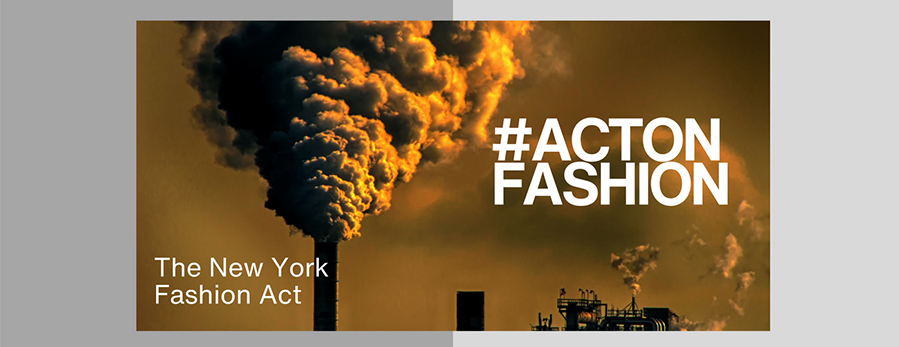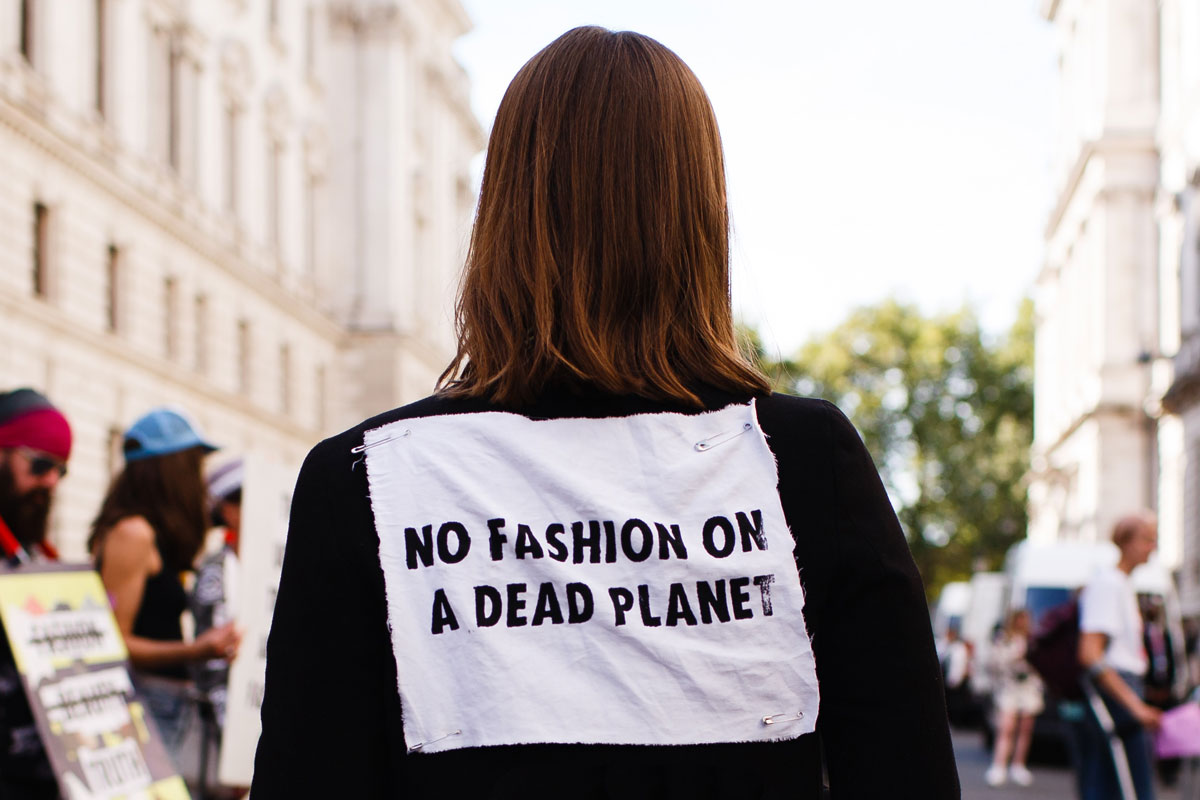How Fast Fashion Fuels Climate Chaos.
Is a $5 Dress Worth a Category 5 Hurricane?
Credo Mobile & Fast Company
(November 11, 2024) — Fast fashion is hot. And not in a good way.
It’s responsible for 10% of the world’s climate-heating CO2—1.2 billion tons a year. It’s also the world’s second most polluting industry, after oil and gas.
In fact, the more you know about fast fashion, the uglier it looks.
- Fast fashion pumps out more carbon emissions per minute than driving a car around the world six times.
- Fast fashion retailer Shein, which adds 1.3 million new styles annually, emits as much carbon annually as a major airline.
By 2050, the apparel industry will use more than a quarter of the carbon budget allowable if we’re to limit global warming to 2°C.
Fast fashion also fuels climate disasters like the recent megastorms Helene and Milton. Which makes you wonder: Is a $5 dress really worth a category 5 hurricane? Are we OK with that?
This is the question posed in a recent article at FastCompany.com. It’s a fascinating story. It draws a direct line from fast fashion emissions to the hurricanes and other climate disasters that are now killing people and destroying communities across the US. [See story below — EAW]
Give it a read. And remember as you shop this holiday season that your choices do make a difference. Choices like going to local stores instead of Amazon. Purchasing fair trade products from companies that pay workers a living wage. Buying sustainable clothes instead of fast fashion.
Are those choices you’d make? Then here’s another one: CREDO Mobile. We’re the only phone company in America that shares your progressive values. That’s why we’ve donated over $95 million to nonprofits like Friends of the Earth, Planned Parenthood and the Transgender Law Center.
Note from CREDO: Invite your loved ones to join us and they’ll get an easy, effective way to support the causes we all care about, just by using their phone. Questions? Send Credo an email or write us at: PO Box 981445, West Sacramento, CA 95798-1445

Fast-fashion brand Shein posted major growth the same week hurricanes devastated Florida
Are Back-to-back Hurricanes the Price
We’re Willing to Pay for Trash Fashion?
Maxine Bedat / Fast Company
(October 18, 2024) — Last week, while I received text alerts warning me that my mother needed to evacuate her Gulf Coast community as Hurricane Milton made landfall, and my sister who is a physician in North Carolina alerted me that she had to cancel her life-extending surgeries due to a shortage of insulin as a result of the prior week’s Hurricane Helene, I also received news of a different variety
Leading fast fashion player, Shein, posted 38% revenue growth. Shein, unknown just a couple of years ago, now has the emissions of a major airline—and continues to trash the planet and fuel the climate crisis, unabated. Also last week, some of the most respected climate scientists in the world released their 2024 State of the Climate, which warned: “We are on the brink of an irreversible climate disaster. This is a global emergency beyond any doubt. Much of the very fabric of life on Earth imperiled. We are stepping into a critical and unpredictable new phase of the climate crisis.
Apparel has more emissions than the aviation sector. It is, according to the Ellen MacArthur Foundation, on a path to take over a fourth of the world’s carbon budget. Are we all just willing to accept this as a fact of life? The timing of two successive, record-breaking hurricanes in the same week as Shein’s growth announcement put the cause and effect of the fashion industry in stark relief, to devastating effect. A $5 dress isn’t worth 150 mph winds. It isn’t worth evacuation orders. It isn’t worth the loss of life.
History reminds us that we do not have to continue on this path. When we saw the ozone growing due to aerosol use, we—normal citizens—joined forces to get our representatives to regulate it. When cigarettes were found to cause cancer, despite massive Big Cigarette opposition, legislators had the fortitude to regulate it, banning advertising, which dried up the funding for celebrity advertising, which made it less cool, which dramatically reduced its use. And in the auto sector, California took the lead and banned the sale of new gas-powered cars by 2035.
For the fashion industry, the status quo of individual companies working on their own impact reductions and working through voluntary frameworks is simply not working. Leadership today means every part of the fashion industry—fashion brands, innovation companies, consultants, trade associations, multi-stakeholder initiatives, models, celebrities, lawyers—needs to step up and collectively push for markets to be reformed by law in ways that drive faster climate action. Want to be a leader in the fashion industry? That’s what it requires today.

The state of New York has a bill set to go before its legislature, The Fashion Act, that does exactly this. It requires that fashion companies that want to have access to its market reduce their climate emissions to a 1.5 degree future, in line with the Paris agreement targets. This is in line with targets that many in the industry have already voluntarily committed to achieve.
The vast majority of carbon emissions in fashion come from the supply chain, which fashion companies share. No one brand is in a position to cover the costs of decarbonizing their supplier, when their competitors would stand to benefit from it. With the Fashion Act in place, all major brands would be required to meet reduction targets and would thus be equally incentivised to step up and address their share of the burden in their respective supply chains.
Without regulation, a company doing the right thing is put at a competitive disadvantage. It is why, at the moment, the few suppliers who have invested millions to decarbonize their own facilities are not receiving a penny more from brands for these investments. That means that the only way out of the collective action problem is to lift the floor through law.
And there is a slaight of leading companies that are leading in advancing the Fashion Act, including Cotopaxi, Patagonia, Eilleen Fisher, Stella McCartney, Ganni, Faherty, Everlane, Rothys, Studio189, Vestiaire Collective, and ThredUp. These fashion companies supporting the Fashion Act represent the future of fashion—they want an industry that thrives while operative within planetary boundaries.

While they lead, it has been revealed that progress on the bill was slowed from lobbying by the main trade association AAFA (which includes Shein as its member) and Big Fashion, Walmart, and LVMH. Why are these organizations willing to let the planet burn just to line their own pockets?
We need the silent middle of the industry—the other brands, trade associations, and multi- stakeholder initiatives like Gap, Ralph Lauren, Nike, Uniqlo, and Apparel Impact Institute to bring their voices to the table.
As Lindsay Hooper and Paul Gilding from the venerable Cambridge Institute for Sustainability Leadership put it in a recent paper, working on the margins of sustainability might be adding to the problem. By only working on, say, circular initiatives, these companies and sustainability advisers are giving a false impression of progress that is delaying “required radical changes to markets and the policies that frame them.”
As climate author Genevieve Genther put it, “This is a timed test, and later is too late.” It’s time our elected officials join with campaigners and the future of the industry and advance legislation that allows the fashion industry to operate within planetary boundaries.
A stable climate is worth more than trash fashion.
